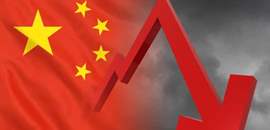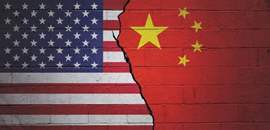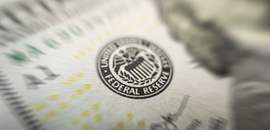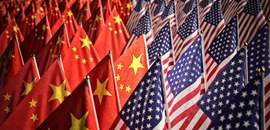Figure 1. Shanghai Stock Exchange Composite Index and S&P 500 Index
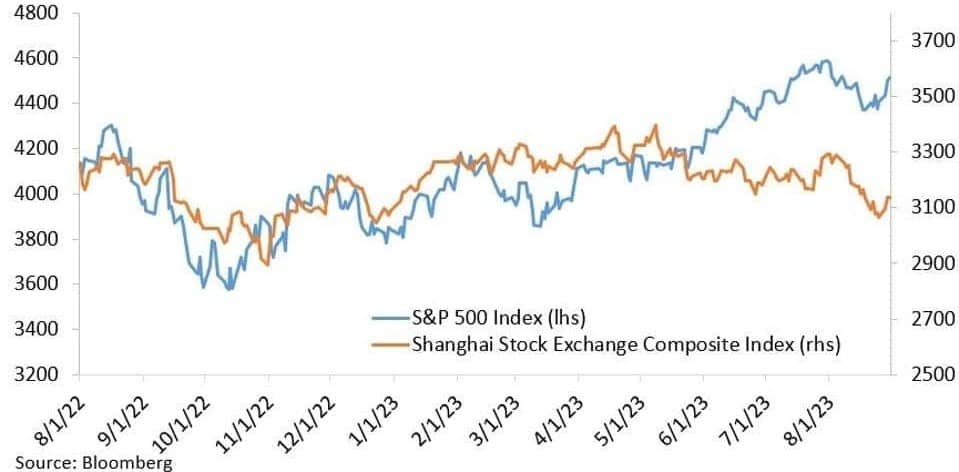 In August, foreign investors sold Chinese shares at a record pace, according to the Financial Times. There is currently a diversity of views about China’s economy. Until recently, most forecasters anticipated that China could sustain 5% growth throughout this decade. However, now the IMF puts China’s GDP growth below 4% in coming years. The Lowy Institute, an Australia-based think tank that conducts research on the Asia/Pacific region, offers a more pessimistic prognosis: It projects that growth will slow to 3% by 2030 and average 2-3% per annum over the next two decades.
In August, foreign investors sold Chinese shares at a record pace, according to the Financial Times. There is currently a diversity of views about China’s economy. Until recently, most forecasters anticipated that China could sustain 5% growth throughout this decade. However, now the IMF puts China’s GDP growth below 4% in coming years. The Lowy Institute, an Australia-based think tank that conducts research on the Asia/Pacific region, offers a more pessimistic prognosis: It projects that growth will slow to 3% by 2030 and average 2-3% per annum over the next two decades.
Is China's Growth Goal Attainable?
There is widespread agreement that the country’s population is peaking and is about to decline due to the former one-child policy. The main engine for growth has been the country’s high rate of capital formation, supported by a high saving rate. However, returns on capital have fallen, owing to diminishing returns, and overall economic efficiency as measured by the growth of total factor productivity which has been cut roughly in half in the past decade. Therefore, economic efficiency would have to improve significantly to achieve the stated target.
Many economists question how this will be possible. Economic policy under Xi Jinping has favored inefficient state-owned enterprises over the private sector, which is the main source of the country’s innovation and dynamism. There has also been an excess of public infrastructure in many areas, and the property sector is now under severe strain following decades of over-building that will take years to unwind. Meanwhile, the government is constrained from boosting spending by China’s high debt ratio, as it is approaching 300% of GDP.
Mickey Levy of Berenberg Capital Markets contends that it would be prudent for China’s leaders to acknowledge these challenges and set a more realistic growth target of 2-3% in the intermediate term: “Trying to achieve a higher target would require significant fiscal stimulus and government investment in unproductive activities that would primarily serve to lower future potential growth."
The Impact on Global Economic Growth
Investors must consider the ramifications if China’s trend growth rate is cut roughly in half. The potential impact on the global economy should not be dismissed, considering that China, along with the U.S., has been the driving force behind global growth since joining the World Trade Organization in December 2001. JPMorgan estimates that China’s contribution to global growth doubled from 15% in the first decade of this century to more than 30% in the second decade.
The following are main areas that are likely to be impacted by a sustained Chinese slowdown:
1. Emerging Economies
First, emerging economies that produce commodities and raw materials are the most adversely affected because China is a major importer of these items. This impact is already apparent in emerging market equities, which experienced their worst monthly returns in August since 2015. As China reduces its reliance on the property sector, which absorbs tons of iron ore from Brazil and Australia, it is also likely to play a less prominent role in the global industrial cycle.
2. The Direct Impact on Asia/Pacific Countries
Second, the region that faces the most direct impact is Asia/Pacific, as it is the most closely integrated with China. Therefore, it could experience a growth slowdown. However, several offsets will help support some countries over the longer term, one being that multinational corporations have been diversifying their supply chains away from China as a result of the COVID-19 pandemic and heightened tensions between the U.S. and China. India, Japan, and Vietnam are among the main beneficiaries, attracting sizable foreign direct investment flows.
3. U.S.-China Trade Relations & Economic Effects
Third, trade flows between the U.S. and China could diminish further due to their ongoing frictions possibly affecting U.S. economic growth. However, should China’s crisis spread, Paul Krugman observes that America has “remarkably little financial or trade exposure to China’s problems.” Another potential offset is that deflationary pressures in China could help alleviate inflation in the U.S. and other industrial countries and thereby help lower interest rates.
Will China Experience a "Lost Decade?"
One issue that some observers have raised is whether China will experience a “lost decade” similar to Japan’s after its real estate and stock market bubbles burst.
My take is that while there are some parallels between the two countries, there are also several key differences, one being that the magnitude of the decline in property values in China is likely to be less severe than in Japan, which experienced a cumulative decline of about 70%. The policy response is also very different as China continues to prop up the market, whereas the Bank of Japan tightened monetary policy, intending to burst the bubble. Furthermore, China’s banking system is less at risk than Japan’s because it is primarily state-owned.
Implications for Investors
Considering these concerns, the most probable outcome is that China’s economic slowdown will be less abrupt than Japan’s. However, it will also take a long time for excesses that have been created to be worked out.
Meanwhile, Chinese corporations’ average return on assets has fallen steadily, both for privately owned and state-owned enterprises, since the mid-2010s. Consequently, while China’s stock market may appear cheap with a low P/E ratio, it could continue to lag global peers for some time because investors have not priced in a sustained economic slowdown. In these circumstances, global investors may routinely underweight Chinese stocks relative to their benchmarks, just as they did for Japanese stocks during the period when its bubble burst.
A version of this article was posted to Forbes.com on September 5, 2023.
This publication has been distributed for informational purposes only and should not be considered as investment advice or a recommendation of any particular security, strategy, or investment product. Opinions expressed in this commentary reflect subjective judgments of the author based on the current market conditions at the time of writing and are subject to change without notice. Information and statistics contained herein have been obtained from sources believed to reliable but are not guaranteed to be accurate or complete. Past performance is not indicative of future results.














